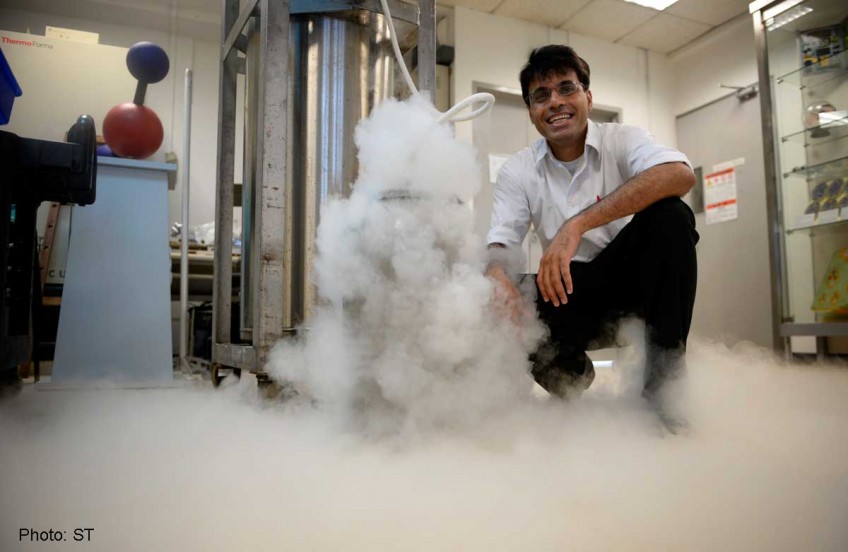Teaching science is sometimes an art


SINGAPORE - Most of us might not see a connection between card games and scientific concepts, but one inventive science teacher did.
Inspired by the Happy Family card game, National Junior College (NJC) chemistry teacher Harman Johll made his own version to teach students particle physics.
"The particles belong to a family, so I adapted the rules of Happy Family to the rules of physics and got students to group the particles according to their families," said Mr Johll, 33.
"Students will use the rules of physics to uncover which particle belongs to which family."
For instance, the quark family consists of the up quark, down quark, top quark, bottom quark, strange quark and charm quark.
With a science department colleague, he made another three card games linked to science concepts, some inspired by Monopoly Deal and Rummikub.
For his innovative teaching methods, Mr Johll is one of the four winners of this year's Outstanding Science Teacher Award sponsored by the Science Teachers Association of Singapore and the Singapore Association for the Advancement of Science.
Mr Johll used the card games to teach basic concepts and they have worked so well that he hopes to publish a paper on the method.
"I made the students go through a series of games and, immediately after, they did a series of tests. There was no formal lesson in between. But they did well and scored an average of 70 per cent," he said.
Mr Johll's chemistry classes are effervescent in other ways - he regales his charges with fun facts about molecules.
Take SF6.
"Once, when my students and I were discussing the shapes of molecules, we came across the molecule sulfur hexafluoride and I asked them if they knew that helium will cause their voice to turn squeaky," said Mr Johll.
"And I told them that sulphur hexafluoride will make them sound like an ogre," he added, changing his voice to sound deeper. This was not related to the lesson at all, but it got the students interested.
"It took me just 30 seconds to talk about this, it was not related to what we were learning, but it engaged the students and that is worth it," said Mr Johll, who plays drums and piano in a four-man band named Cockpit in his free time.
The former St Joseph's Institution and NJC student said mathematics has always been his "first love".
But he pursued chemistry as it still allowed him to dabble in mathematics and play around with equations.
"I also saw that chemistry could bridge the sciences and it allowed me to understand nature from a very fundamental point of view," said Mr Johll, who majored in chemistry at the National University of Singapore, graduating as valedictorian in 2006.
The only child of a tour guide and a clerk, Mr Johll went on to pursue a master's in chemistry and, in 2010, joined the National Institute of Education to train as a teacher, where again he graduated as valedictorian.
Asked why he chose to teach chemistry instead of going on to do research, he said: "When you love something a lot, you want to communicate it every day. You want to teach and share it, and when you teach it, you always learn something too," he added.
Elements and atoms are not all that he has an affinity for, though - he has entered into matrimonial bonds with Ms Kelly Tran, 29, a chef turned housewife. They have a six-month-old son, Alexey.
"If Harman cannot do science, he is not himself," said Ms Tran. "If there is a science problem that he can't solve, he can't sleep. Even if he is already in bed, he will wake up to work on it."
At home, the couple have a set of building blocks and a shower curtain with the periodic table printed on them. "Sometimes, we will tell our son things like H2O is water," said Ms Tran.
What Mr Johll finds most rewarding about teaching is when students go to him with ideas and want to try new things. He said: "When students say they want to do this, it is intrinsic motivation. What I've taught them is driving them to want to do more."

This article was first published on August 25, 2014.
Get a copy of The Straits Times or go to straitstimes.com for more stories.